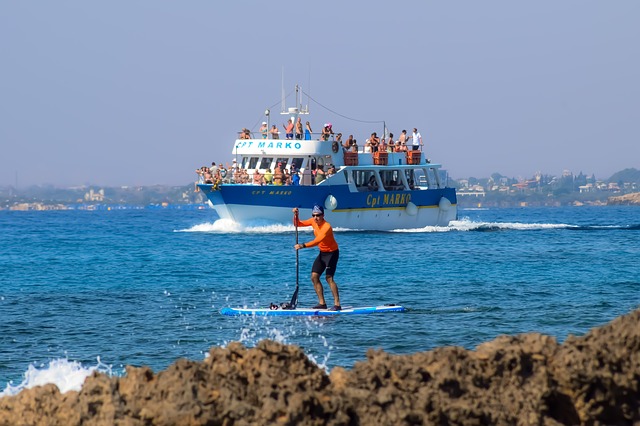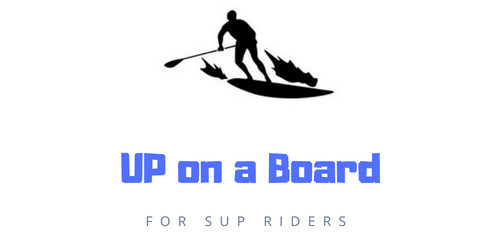Balance Training to Improve Your Ability for SUP

It’s no secret that being able to stand up on a paddle board on water takes some ability to balance. A strong core system and lower body goes a long way with being able to master SUP. If you’re a bit out of shape or weak in those areas it may be a little more challenging to ride. Although a lot of beginners are able to get the hang of it.
Why is Balance Important? Balance is key to basic everyday movements like standing, walking, running, riding a bike. We often take our ability to balance for granted. Reaching for an object that we have to stretch for or tying our shoes takes some sort of ability to balance. As we age, we gradually can lose our ability to balance if we aren’t keeping our bodies conditioned to do it. Many elderly suffer from life threatening falls every day from diminished ability to balance.
Balance Training
How do we improve our balance? Putting in the effort to do various types of balance training will help strengthen our body.
I’m not saying that you need to go all out with some elaborate balance training, but just committing yourself to spending a little time will help with long-term results.
If you want to do something more intense, that’s great. Improving the core is central to maintaining balance.
Your core helps with overall posture and strengthens the back muscles to help prevent back injuries. I’ve suffered from chronic lower back pain my whole life and having something like a herniated disc is excruciatingly painful.
It’s easy to take for granted how important your back is for those everyday simple movements. Pilates, lunges, squats, ab workouts, or leg presses are all great exercises for balance and SUP movements.
Check out my post on Why paddle boarding is a great workout, for more details on getting the most out of SUP for exercise.
Here is a simple balance workout that you can do for 10 minutes a day and see results over time:
Tall on One Foot- Balance on one foot for at least 30 seconds, and then switch while standing as straight as possible.
Using a Ball– Sit on a stability ball with your feet lodged flat on the floor, placed around shoulder-width apart. Lift and extend one leg at a time, while concurrently raising your opposing arm to shoulder-level.
Swing the Leg– Start by standing with your arms at your sides and feet shoulder-width apart. Lift one leg to a 45-degree angle and swing it back and forth at least 10 times before switching.
One Leg Floor Touch– Begin by standing on one leg with lifted leg at a 45-degree angle. Bending at the waist, lean forward to touch the ground. Then, with one hand touch the ground.
When utilizing various balance exercises here are ways to make it more challenging:
- Increase the amount of time you’re doing the exercise
- Keep your eyes closed during the exercise
- Utilize resistance bands or weights
- Let go of supports that you may be using to aid your balance
- Add additional movements to a pose
Reduce Anxiety– Many balance training workouts culminate in an inner focus. This emphasis on mindfulness helps to calm the mind.
Focusing more on deep-breathing throughout your training will help get more oxygen to your brain while reducing those cortisol levels.
Engaging in exercise helps build self-confidence and those feel good endorphins. In my post, Your Guide to Relaxing on SUP, I discuss further ways to reduce anxiety with paddle boarding.
Injury Prevention- Through balance training, your body will naturally be more agile to help reduce the risk for falls. Injuries can be reduced by building stronger muscles through training and also stronger bones which are less likely to break from a fall. Your reaction time can increase which can help you to react to potential threats of harm. Coordination is improved through balance training, which can help you navigate your surroundings more effectively.
Balance Boards
Anyone can use a balance board virtually anywhere for major physical benefits. Utilizing a balance board helps with the brains ability to subconsciously sense how the body is positioned and moving.
Your brain is always adjusting your body’s position and reflexes without us even knowing it. This is a part of our brain that diminishes over time.
Balance boards have been very effective for physical therapy to help the elderly or injured improve this function in the brain.
Balance boards are also great for physically strengthening the body’s core. I’m a big fan of Indo Board products.
They have balance board’s geared for various sport training. Indo Board products can replicate some of the wave movements that SUP riders encounter to help improve performance.
They also have a great video and instructional workout programs to get the most of the board.
Click Photo for Indo Board
Implementing it in SUP
As you are strengthening your balance and core off your SUP, it’s going to carry over to when you ride. You’ll be able to stay comfortably on your board for longer periods of time without developing tired legs.
- Work on the techniques that you are using in the gym, on your balance board, or your daily routine when you’re paddling the waters.
- Start on calm waters before riding in the ocean or more rough waters
- Continue to maintain proper balance on your board through a good stance with legs shoulder width a part and slightly bent.
- As your paddling or shifting your weight on the board, keep your core engaged.
- Work on moving around your board by slightly hopping forward and backwards, cross-step, or shuffle your feet
Finally, taking the time off the water to enhance your body’s ability to balance and build a stronger core, will optimize your time on your paddle board.
Utilizing the benefits of balance training combined with the balance workout that SUP provides will be another big step forward towards maintaining optimal health.
Please comment below on anything that you’ve enjoyed from this post or ways you’ve seen balance training positively affect your SUP experience.

